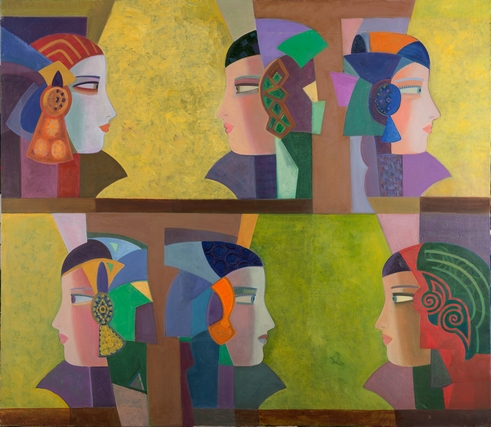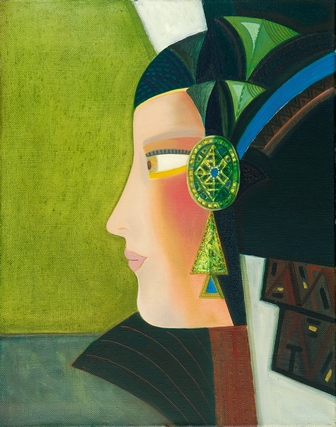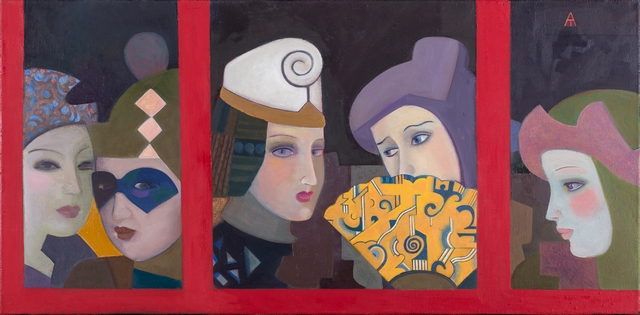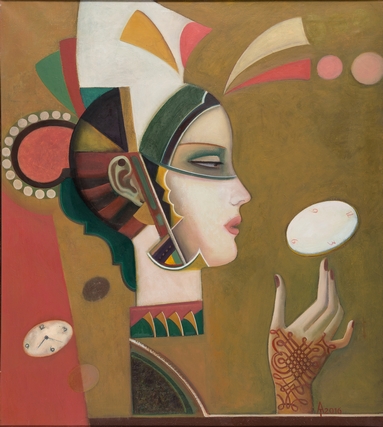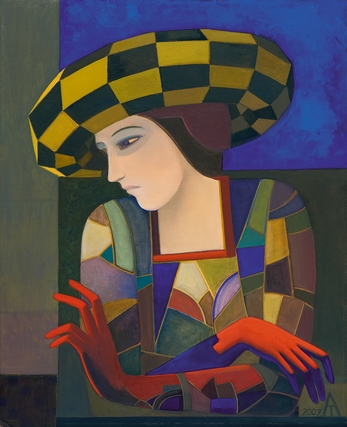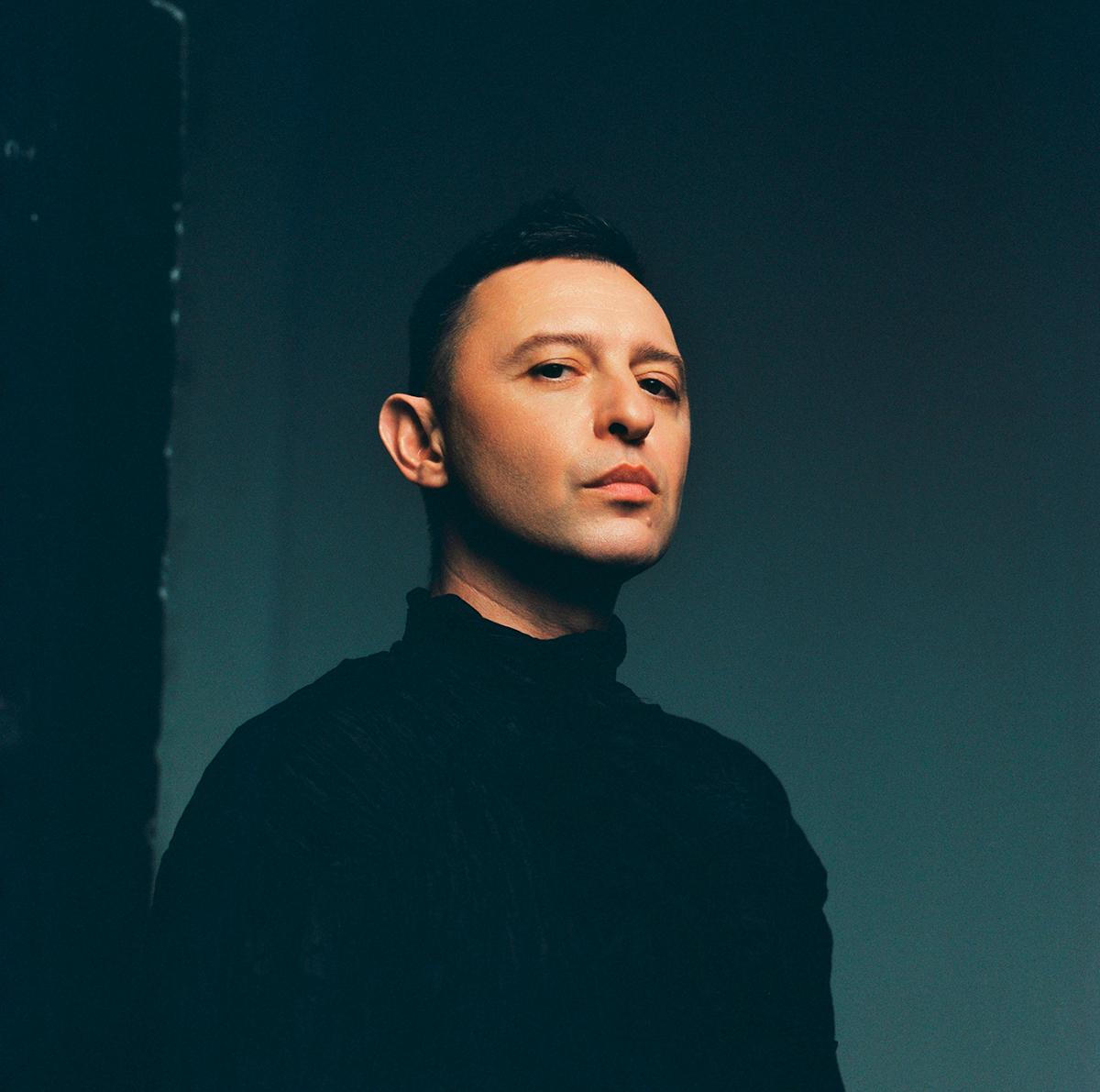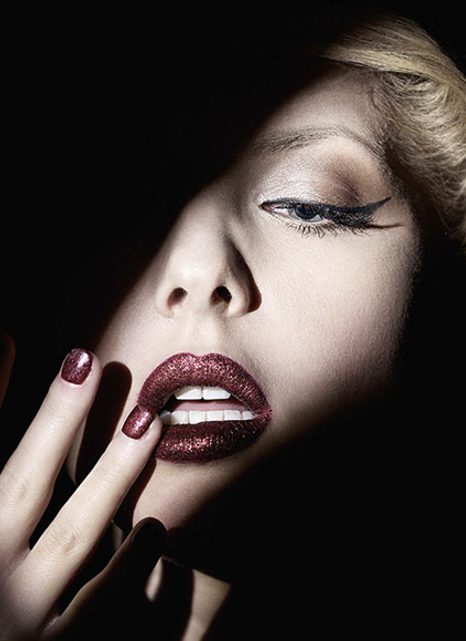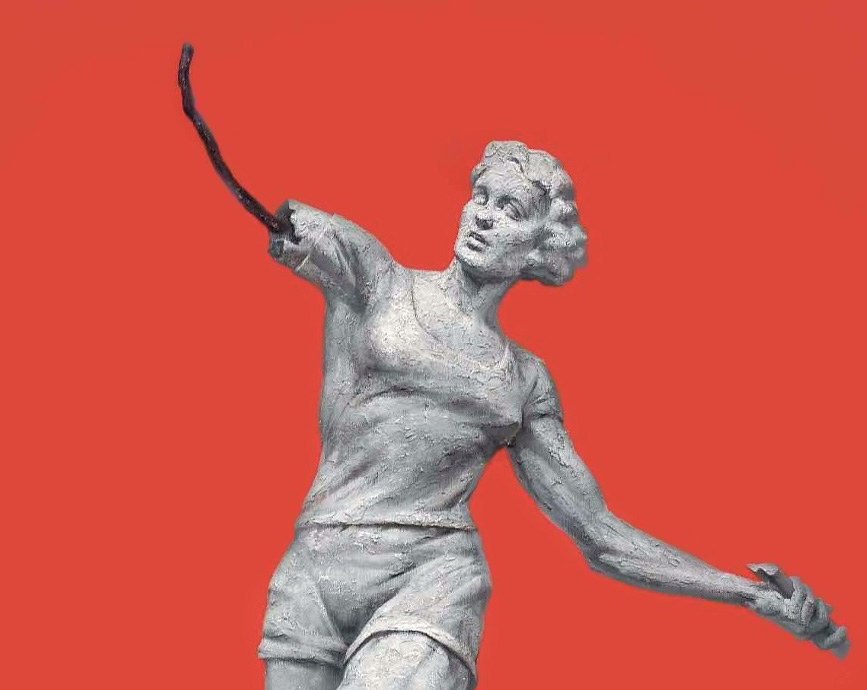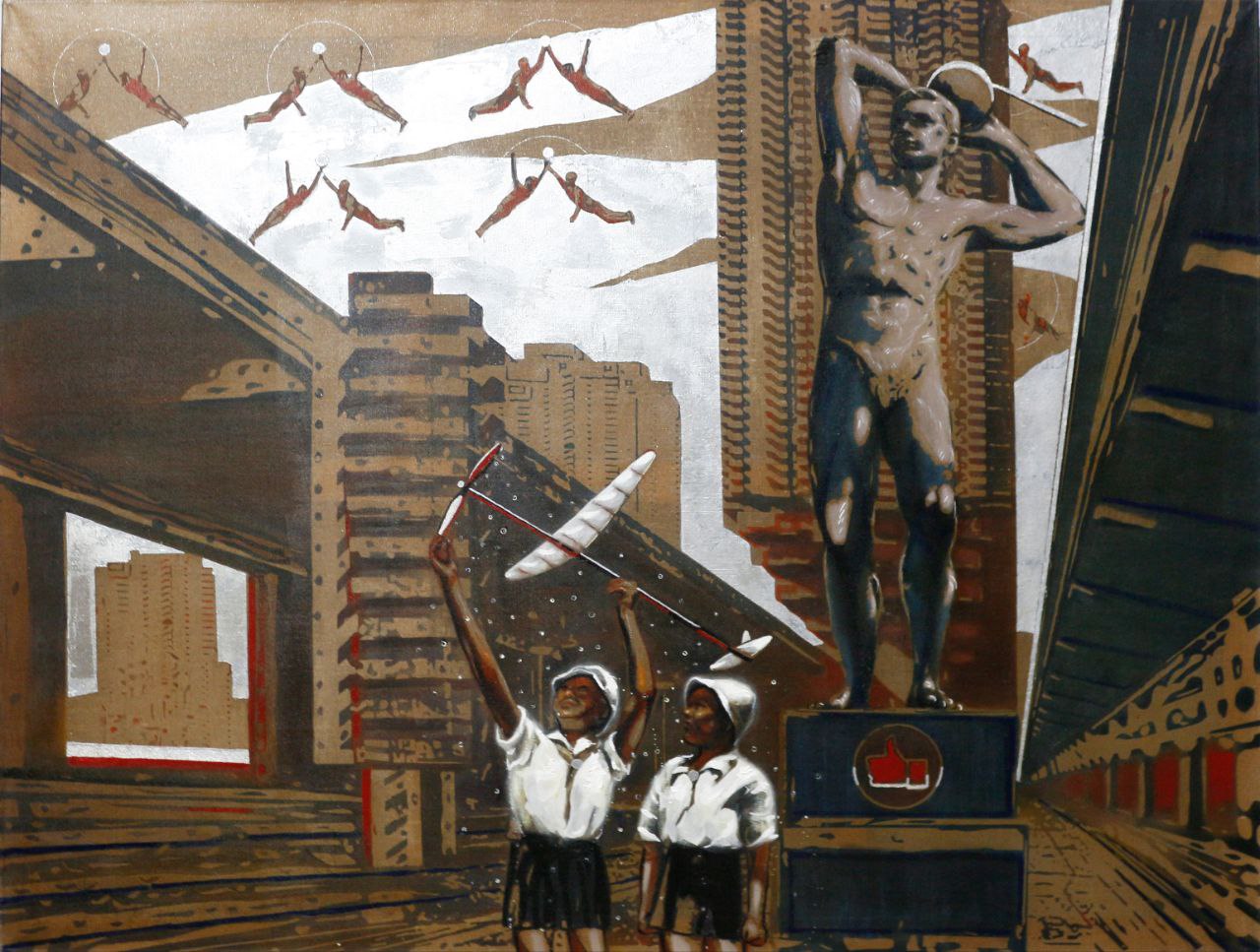Erarta Museum presents vivid paintings by artist and illustrator Tatiana Alekseyeva paying homage to the passion of her youth, fashion
Tatiana Alekseyeva:
Since my early childhood I lived in Leningrad. My parent’s jobs had no connection to art whatsoever. My mum is a mathematician; my dad is a military linguist, language teacher and a great appreciator of the painting medium. Not becoming an artist was his life-long regret, and so he would insist on my art education, hoping that drawing would become my profession. Indeed, drawing was my passion as far back as I can remember. Nearly every Sunday dad and I would visit either the Hermitage or the Russian Museum. I can clearly recall my early impressions of the fabulous interiors, the magnificence and beauty of sculptures and paintings exhibited in those luxurious halls. What a great influence such things make on the human mind, worldview, and spirit! This is of course particularly important when you are still a child. The habit of visiting museums as often as possible stuck with me for life.
Drawing was my principal extracurricular activity up until the age of 15 when I entered the children’s art school on the Fontanka River, but the most interesting things started happening after I enrolled at the fashion design department of the Leningrad Vera Mukhina Higher School of Art and Design. Its exquisite building was designed by architect Maximilian von Messmacher for the Baron Alexander von Stieglitz’s School of Technical Drawing and set in one of St. Petersburg’s most beautiful places. Situated right opposite it across the Fontanka River are the Summer Garden and the Engineers’ Castle, Summer Palace of Peter the Great and the Field of Mars. I am still very grateful to my wonderful teachers, Vyacheslav Tikhonov and Vasiliy Suvorov. Our fashion design department was inaugurated at the Mukhina School in 1965, only one year before I became its student. We were given just as many class hours of painting and drawing as the students of other departments. Many classes would take place at the Museum of Ethnography where we copied garments and ornamental patterns. This turned to be of much help later on when I illustrated folktales from all over the world. Studying was a lot of fun, our composition teachers would give us complete freedom. Mind you, this was the end of the 1960s, and soviet fashion was very much influenced by the then-current political regime. That said, we, as students, could come up with the most daring projects, and our monthly presentations drew crowds from all over the school. The professional fashion designers who lectured at our school while working at the Leningrad House of Fashions would eagerly wait for each presentation, wondering how much more extravagant our projects could get. Their own work was way too restricted by state standards and all sorts of limitations. Our department was considered quite out of the ordinary at our school, and so we did our best to foster this unconventional image: for the school dances that took place three times a year, we made for ourselves flamboyant garments which would be discussed long afterwards.
At the end of my fourth year I was sent to Moscow as intern at the Garment Industry Design Bureau then headed by a marvellous, talented and strong-willed woman, Associate Member of the Academy of Arts Alla Levashova. The Bureau was truly a hive of creative activity, bustling with the ideas of artists who worked there. The graphic arts department was supervised by Mikhail Shvartsman, an artist, original thinker, master craftsman and philosopher. It was only years later that I came to appreciate the unique nature of his drawings and paintings. My future husband, Nikita Medvedev, then a student at the Stroganov School of Arts, was in Shvartsman’s class.
I was extremely lucky to have spent my childhood and youth in St. Petersburg, the most beautiful and unique of the world’s cities, the city of spectacular architectural ensembles.
After graduating from the Mukhina School I married and moved to Moscow. It took me a while to get to like the city; over the first years I desperately missed St. Petersburg and travelled there almost every month just to stroll through its streets, see some of my friends, including my closest pal Olya Fimina, and of course visit the Hermitage.
In Moscow I found a job as graphic artist, although my real dream was to design garments and my head was brimming with fashion design ideas. I worked for many magazines and publishers, illustrating dozens of fairy tales, both folk and literary. They really sparked my interest and excitement. I spent hours at the library, searching for a specific ornamental pattern, traditional costume details, pictures of everyday objects, dwellings or landscapes native to a particular country. When reading folktales, children always pay a lot of attention to the illustrations, memorizing every detail, and it’s really important to give them a correct impression of the country where the action takes place. Kids from India wrote me letters, telling how my pictures illustrating Russian tales showed them what winter was like, and how much they admired the beautiful coat worn by the Russian Santa! These letters were addressed to the editor’s office of the Soviet Woman magazine where I worked for more than 25 years, illustrating folktales and stories, designing holiday greeting cards, and nearly every year receiving special awards. The magazine was translated into 15 different languages and distributed in 100 countries.
For many years, its design director was Vsevolod Medvedev, a man of thorough education, great erudition, and unmatchable kindness. He illustrated works by Dostoevsky, Turgenev, Pushkin, Tolstoy, Andersen. I consider him my first teacher in book illustration, on whose advice and assistance I could count at any time since he also happened to be my father-in-law. The Chief Editor from 1970 to 2002 was Valentina Fedotova. That was the magazine’s heyday, with continuous international creative exchange, journalist and artist trips, exhibitions, annual awards for the best contributors... Valentina Fedotova personified confidence, reliability and soundness in a good sense. When Perestroika came, she made every possible effort to keep the magazine going, but times were changing fast. By the mid-1990s, only the Russian edition remained, under a different title and with a completely different agenda. The magazine, now called Woman’s World, still functions today, but without Valentina Fedotova. Her retirement and then her sad passing signalled the end of the glorious age of magazines which managed to survive without giving half of their page count to advertising and gossip.
I also illustrated a number of books for Detskaya Literatura (Children’s Literature) publishing house. The art editor of my first three publications was this publisher’s art director, Boris Dekhterev, who was exceptionally kind to young artists.
Over the past 15 years I have been creating many easel graphic works and paintings. My favourite themes are theatrical costumes and masks. Probably this is a kind of nostalgia for the creative world of fashion that I left behind at some point.
I learned painting from my husband, Nikita Medvedev, a muralist and very original and talented artist. I am a lifetime admirer of his works, proud to have shared a studio with him. My only regret is that I did not take up painting much earlier. I was too late in realizing that painting, the Queen of all arts, brings immense joy to the painter, despite the throes of creative endeavour.

